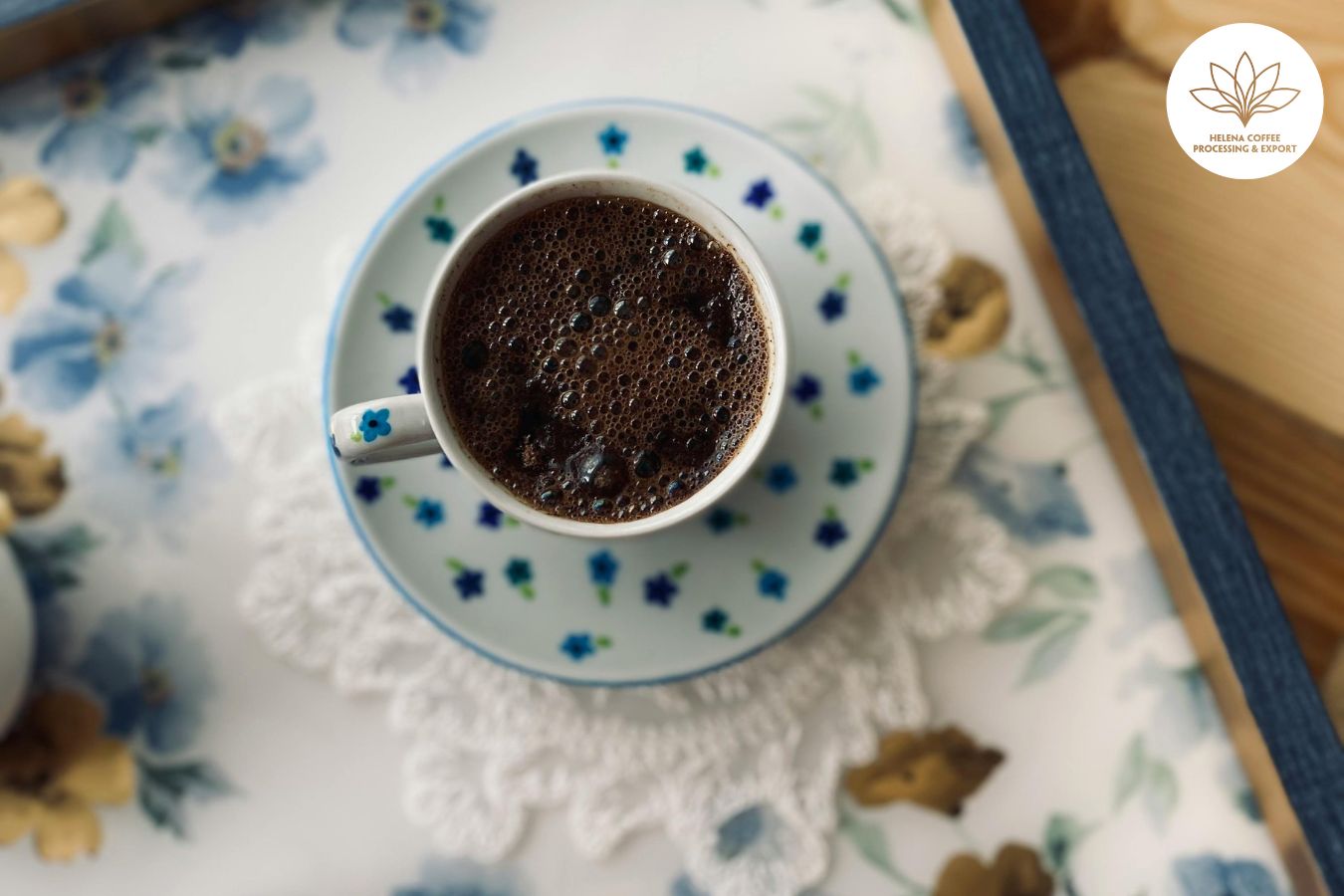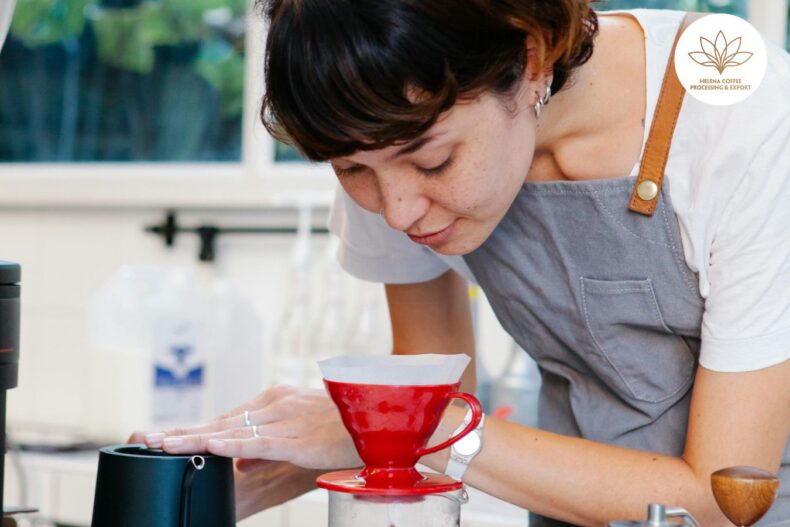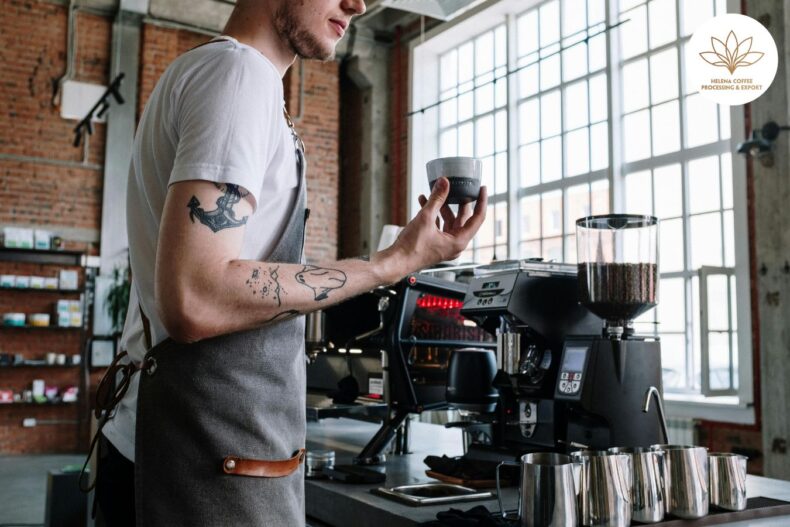
Greek Coffee Culture: Greece is one of the oldest and most relevant coffee-consuming markets in the world. It is estimated that in the 17th century there were already more than 300 coffee shops in the port city of Thessaloniki alone.
Over the years, coffee has become even more ingrained in the country’s culture. Today, traditional coffee shops remain a staple of modern Greek life, while a thriving specialty coffee scene has developed since the early 2000s.
The increasing attention paid to coffee quality has led to innovation in roasting, consumption and preparation methods, which is evident with the entry into the market of products such as Roastelier by Buondi Craft .
To find out more about these innovations and how coffee shops can keep up, I spoke to two Greek coffee professionals. Keep reading and find out what they told me.
History of coffee in Greece
Average coffee consumption per capita in Greece amounted to 3.5 kg in 2021 and is expected to reach 3.9 kg in 2025.
The country’s historical relationship with coffee dates back to the 18th century. Since then, the kafeneio (traditional coffee shop) has been considered an institution throughout the country.
At that time, the kafeneia were famous as meeting places where intellectuals and free thinkers discussed and debated current issues.
In the three centuries since, Greece’s fascination with coffee has only increased. It is worth highlighting the ibrik or cezve (called ellinikó in Greek), which began to become popular towards the end of the reign of the Ottoman Empire.
Greek coffee culture: This method, originating in Turkey, was adopted by the Greeks under Ottoman rule and is used today to prepare Greek, Turkish and Arabic coffee.
In 2014, Stavros Lamprinidis won the Cezve/Ibrik World Coffee Championship. Also, he was a finalist in the 2012 and 2013 contests, and works with Roastelier de Buondi Craft .
“In Greece, traditional Greek ibrik coffee is still consumed , especially in homes,” says Stavros.
He says that Greek ibrik is prepared in a long-handled pot where water is poured and finely ground coffee is added. Some sugar is often incorporated. The mixture is heated to just before boiling point and poured into small cups. Greek coffee culture: The fine grind remains at the bottom of the cup, giving the ibrik an intense, smoky flavor and a thick mouthfeel.
Traditional coffee culture
Traditional kafeneias remain an essential element of the Greek coffee sector. Some of them, such as Dexameni and Panellinion in Athens, created between the end of the 19th century and the beginning of the 20th century, continue to operate today.
These kafeneia are mostly frequented by the local population and tend to be popular with the older generations. Although they tend to use darker roast coffee that historically has not been of outstanding quality, they play a key role in the country’s coffee culture.
Ibrik coffee was for centuries one of the basic elements of kafeneio culture and the most requested drink on their menus until the 1950s. Since that time, the Greek market has undergone numerous changes.
“Greece is a country that prefers cold coffee drinks rather than hot,” explains Stavros. This is due, logically, to its Mediterranean climate.
“The frappé (an instant coffee-based drink) and its espresso -based counterpart , known as freddo , were invented in Greece,” he adds.
The frappé was actually created accidentally at the Thessaloniki International Fair in 1957. Dimitris Vakondios, a Nestlé employee, mixed instant coffee, sugar and cold water in a shaker, creating a foamy coffee drink.
This texture, similar to that of a modern frappuccino (which could be considered inspired by the frappé ), had never been part of Greek coffee culture. Greek coffee culture: It became popular almost overnight and has continued to do so since the sixties due to its simplicity and comfort.
In the 1990s, another change occurred in Greek coffee culture: the proliferation of espresso . With the advent of espresso machines , the frappé evolved into the freddo .
It is made by shaking two shots of espresso with ice (and often sugar), which creates a frappé -like texture . Greek coffee culture: It can then be used as a base for other drinks. Freddo cappuccino , for example, is made by pouring a thick layer of cold foamed milk over this cold espresso mixture .
“These types of drinks are common in specialty coffee shops, particularly freddo ,” says Stavros.
The emergence of specialty coffee
Some time after the arrival of frappé and freddo another key change occurred in Greek coffee culture: specialty coffee began to gain ground.
Stavros says: “Specialty coffee culture became more popular in Greece in the early 2000s, which came as a surprise to more traditional consumers.”
As the presence of specialty coffee evolved, Greek cafes began to open. In these more modern coffee shops the focus was on improving quality and customer service. From then on, the cafeteria became known as a place that attracted younger consumers.
“Over time, coffee quality improved, leading to new trends in the specialty coffee market, such as single origin and 100% Arabica coffees,” explains Stavros.
Coffee consumption also remained strong. In 2018, Greek consumers drank an estimated 40,000 net tons of coffee, ranking 17th in the world at the time.
Tatiani Cambioti is business director for the Nestlé Professional group of Greece, Albania and Cyprus. He says: “Greek consumers are well informed about coffee, not only because of the variety of products and coffee concepts, but because of the well-trained baristas on the market.”
In Greece, being a barista is a highly respected profession. Across the country, baristas are highly regarded for their coffee skills and knowledge. Greek coffee culture: They consider it a profession rather than a temporary or part-time job.
To date, ten Greek baristas have won the World Coffee Championship , including Chris Loukakis, 2011 world latte art champion , and Stefanos Domatiotis, 2014 world latte art champion.
Roasting trends in Greece
Greek coffee culture is steeped in tradition but has incorporated specialty coffee in some regions, so popular roasting trends vary.
“When specialty coffee began to emerge, roasters seemed to prefer lighter roast profiles, which traditional consumers were not accustomed to,” explains Stavros. “Now, there is a balance and light to medium roast profiles are becoming more common.”
As a wide variety of styles and trends triumph in the Greek coffee sector, it is important that coffee shops can adapt to different consumer demands.
“Some coffee shops have their own roasters and produce and sell unique blends,” says Stavros; However, commercial roasting equipment can be a significant investment for many coffee shops. In addition, it takes up a lot of space, which is often scarce in these premises.
“Although the cafeteria offering is increasingly broad, only a select number of establishments offer the unique experience of on-site roasting ,” says Tatiani.
One of the gateways to this expanding market is through Buondi Craft’s Roastelier. Greek coffee culture: The Greek market was the first to launch the Roastelier countertop roasting solution , which helps coffee shops make better use of their experience.
Tatiani states: “it makes on-site roasting simple, accessible and customizable, thus offering a unique competitive advantage.”
Thanks to their more compact designs, countertop roasters allow café owners to roast in smaller batches and maximize the freshness of both blends and single origins.
“Roastelier® by Buondi Craft is a revolutionary and original solution,” adds Stavros. “It allows coffee shops to roast coffee beans for immediate consumption.”
Greek coffee culture: “Other micro roasters must wait seven to ten days to have roasted beans available. With Roastelier’s innovation it is very easy to create your own blend with different roasting profiles and help your brand stand out in the market.”
Keeping up with changing consumer tastes
The Greek coffee market is both traditional and innovative. While espresso -based drinks account for more than 75% of overall coffee drink demand in the country, frappe and ibrik still make up 21% of total out-of-home consumption, a significant share.
“Over time, consumers get used to everything and the new waves of coffee are already arriving,” says Stavros. Greek coffee culture: “There are more and more well-trained baristas and consumers continue to look for superior coffees, both inside and outside the home.”
In this sense, the country has also begun to organize events. For example, in 2015 the first Athens Coffee Festival was held. In just six years, in 2021, it had about 16,500 visitors .
When it comes to coffees, freshness remains the main focus. Greek coffee culture: Tatiani explains how Roastelier’s process ensures that café owners can get the most out of their coffees.
“Our solution offers a combination of premium Arabica coffees from all over the world,” he explains. Greek coffee culture: “The beans are carefully put through the first roasting step with our patented roaster and filter set, using our INTELLIRoast technology at the Inofyta factory in Greece.”
“Our INTELLIRoast technology and service platform are designed to support customers every step of the way to transforming a coffee shop into a Roastelier® experience.”
Stavros, for his part, adds: “Roastelier® by Buondi Craft is not only creating a new trend, it is helping to shape the future of on-premise roasting.”
Greek coffee culture: “It allows coffee shops to boost their business by offering artisanal coffee experiences with their signature roast.”
It can be difficult to keep up with coffee trends, especially in a consumer market as large and unique as the Greek one. Greek coffee culture: For coffee shops, countertop roasting solutions like Roastelier allow baristas to focus on freshness and the artistry of roasting, while setting profiles for a wide range of preparation methods, beverages, and consumer tastes.
“Thanks to Roastelier® by Buondi Craft, passionate baristas can now offer freshly roasted coffee without complications, or even personalized blends, to satisfy customers,” concludes Tatiani.
FAQS:


